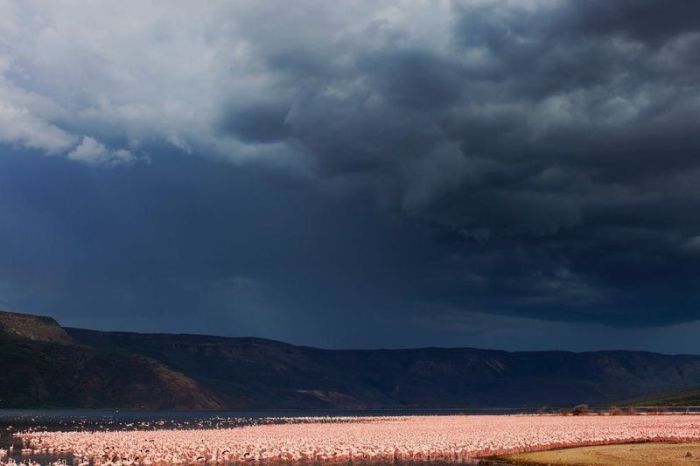|
|
Pink Blanket Of Flamingos, Rift Valley Lakes, Nakuru Lake National Park, Kenya
|
Feeding
Flamingos filter-feed on brine shrimp and blue-green algae. Their oddly shaped beaks are specially adapted to separate mud and silt from the food they eat, and are uniquely used upside-down. The filtering of food items is assisted by hairy structures called lamellae which line the mandibles, and the large rough-surfaced tongue. The pink or reddish color of flamingos comes from carotenoid proteins in their diet of animal and plant plankton. These proteins are broken down into pigments by liver enzymes. The source of this varies by species, and affects the saturation of color. Flamingos whose sole diet is blue-green algae are darker in color compared to those who get it second hand (e.g. from animals that have digested blue-green aglae). Zoo-fed flamingos, who often lack the color enhancer in their diet, may be given food with the additive canthaxanthin.
|
|









